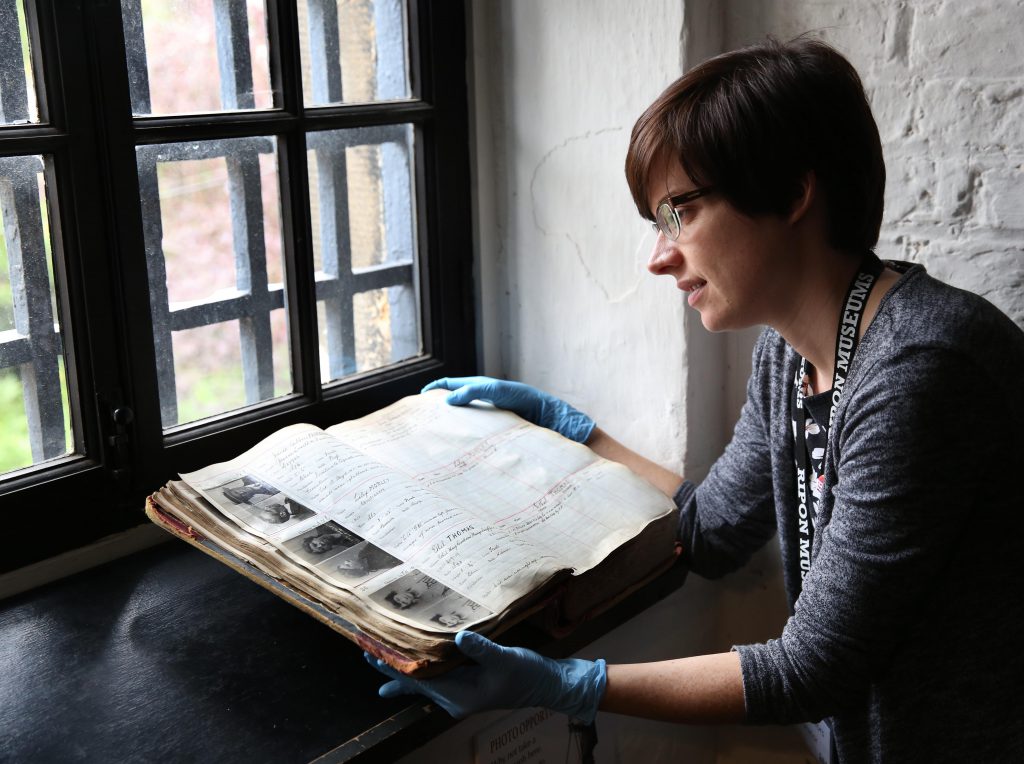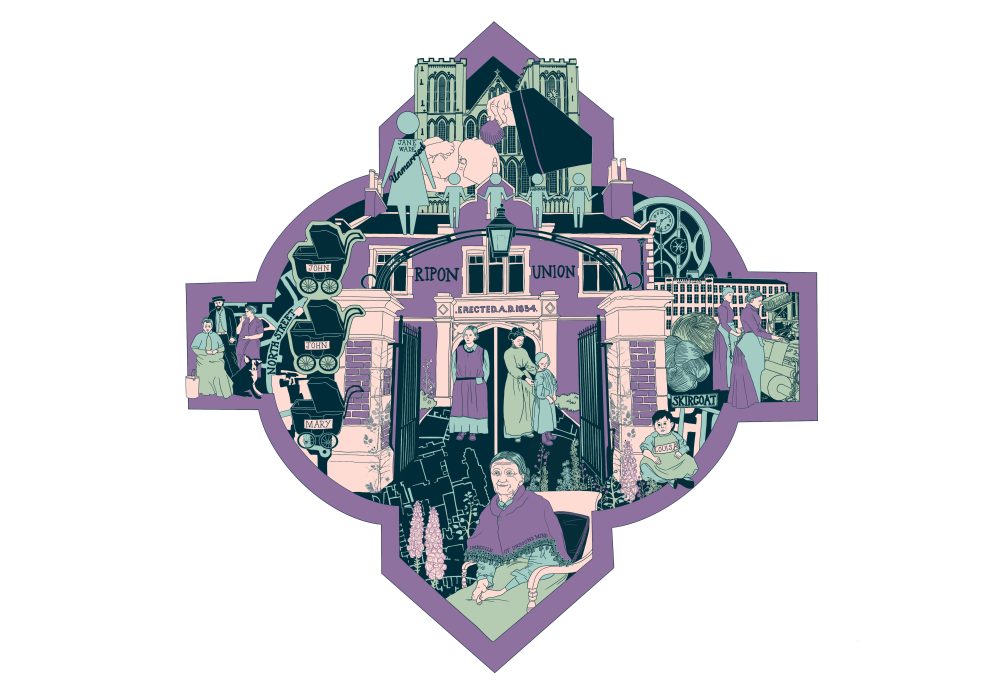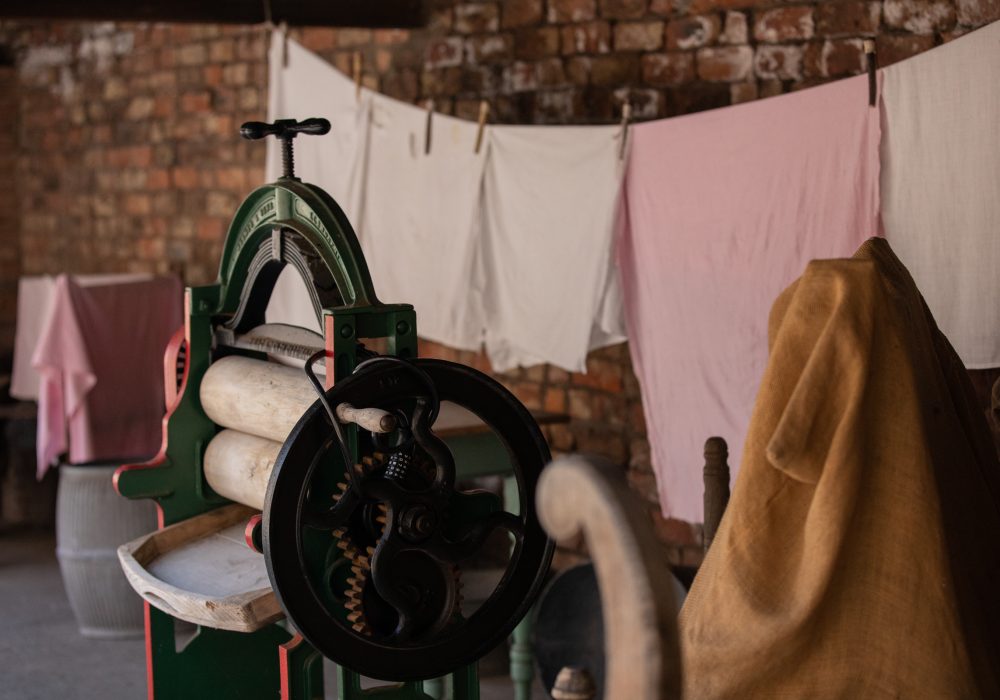Researching your family history can be a fascinating pursuit and it’s interesting to hear from visitors who have uncovered stories of relatives with connections to Ripon Workhouse.
Unfortunately, Ripon Museum Trust cannot carry out research for you.
But we can help. These notes are designed to help you find the records you need.
The records are kept at the County Record Office in Northallerton, but most are micro-filmed and can be accessed at Ripon Library.
From 1930, the workhouse was formally known as a County Welfare Institution, and from 1953 was known as Sharow View. The residents were moved out in 1974 to Ripon House, which was a county old folks’ home, where, until 1985, some of these records were still compiled.
Getting started
Anyone tracing an ancestor at Ripon Workhouse needs to understand two things:
Firstly, that in the early years, there were more admissions and discharges (comings and goings) than in the later years when residents tended to stay in for longer, sometimes for life. So, records were faster-changing in the Victorian period than later.
Secondly, that for the later years, surviving records are continuous and comprehensive, but for the earlier years many records are missing.
For some years there are no registers surviving at all. There is very little before 1866, but for 1866 to 1869, 1877 to 1880, and from 1884 to 1897, there is nothing at all. But all is not lost. There are the census records, which give us an accurate account of everyone in the workhouse on census day in 1841, 1851, 1861, 1871, and so on. Using a combination of the census and the workhouse records we can close some of the gaps.
Census records give us alphabetical lists of workhouse residents’ names with their ages and places of birth, and occupations, decade by decade, from 1841, when the first records began to record names instead of just counting numbers.
Clearly who is in residence between each census day has to be found or inferred from other sources, but there is a gradual tendency over the years as inmates stayed longer, for them to appear in more than one, and then more than two censuses, as the turnover slowed down.
Workhouse records
The vast majority of workhouse records are about the spending of money, or about the administration of the workhouse. Residents, or inmates appear as numbers, as statistics. Surnames don’t often appear in the Master’s Note Books, the Board of Guardians Minutes, or the surviving correspondence records.
These are the records which record residents by name:
Registers of Inmates were composed continuously from 1929 to 1973, but do not survive from earlier years. Although composed from 1929, they will also include residents who arrived before 1929, since their admission dates are also included. Their ages and parishes of origin are given.
Admission and Discharge Registers composed from 1880 to 84 have survived and also from those from 1909 until 1973.
Clearly the later ones will tie in with other records, but not so the earlier ones. These will tell you, obviously, who arrived during 1880 to 1884, but they will not record the residents who had arrived before 1880. They will tell you of the residents who left or who died during those years, and, usefully, when they had been admitted. Again, ages and parishes of origin are included. But the majority who were resident between 1880 and 1884 may not be recorded at all, so do not assume that if someone you are looking for is not mentioned in these years that they are not there.
Creed Registers record the denomination of the residents, for the use of the chaplains, and survive from 1869 to 1877, from 1902 to 1913 and from 1935 to 1951. But again, the registers only record the incomers. Those already there will have been recorded in earlier volumes
Death Registers have survived from 1853 to 1866 and again from 1915 to 1985. The later records will tie up well with other workhouse records, but the earlier ones can be of little use without the Census records of 1841, 1851 and 1861.
Relatives’ Addresses survive in records made 1897 to 1901, a useful period since other records are missing for these years.
Birth Registers survive for the years 1855 to 1934 in three volumes. But these are not principally the children of women in the workhouse, but of unmarried women who have come into the workhouse to give birth. Some infants might stay as orphan children and can be checked against the census records. Casual Paupers, or tramps, can be found in records documenting their arrival and departure, showing where they came from, and where they were going to. There are records of those refused admission (in the early years usually because the wards were full, but later because of indiscipline).
There are plentiful records of those not in the workhouse but receiving outdoor relief from 1853 onwards.
For all these, your next step is to look at the North Yorkshire County Record Office Index for Ripon Workhouse papers, which will provide more detail. All have index numbers, and nearly all are available on micro-film, marked in the index MIC.
Those not so marked have not been filmed and are only available to see at Northallerton.


